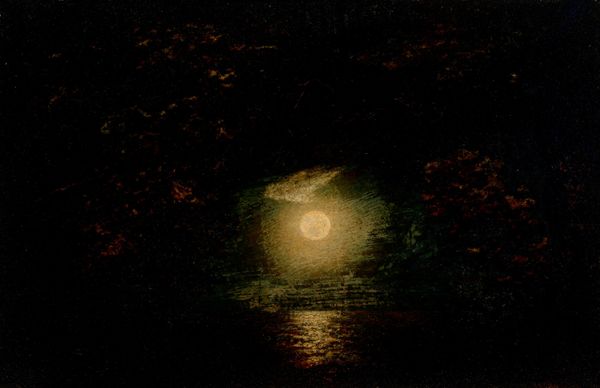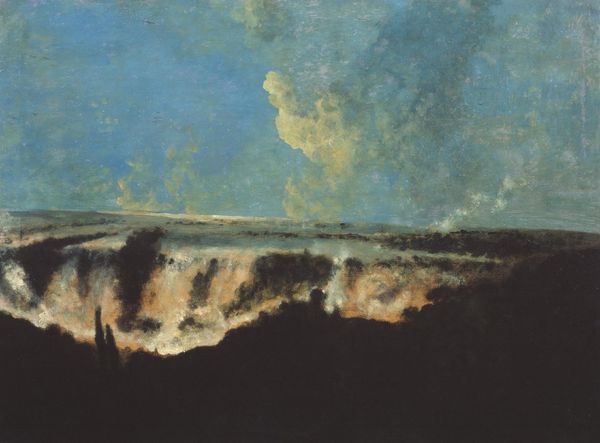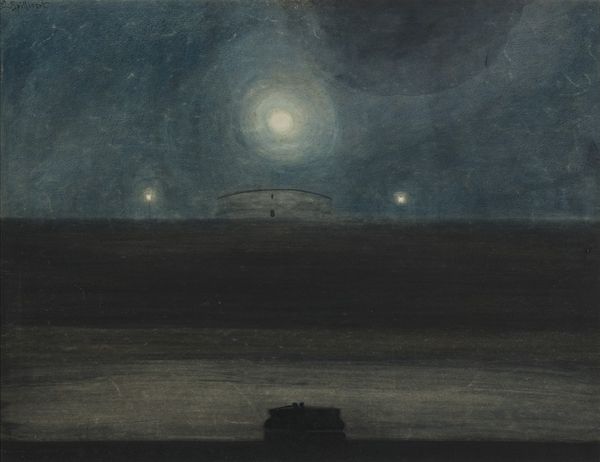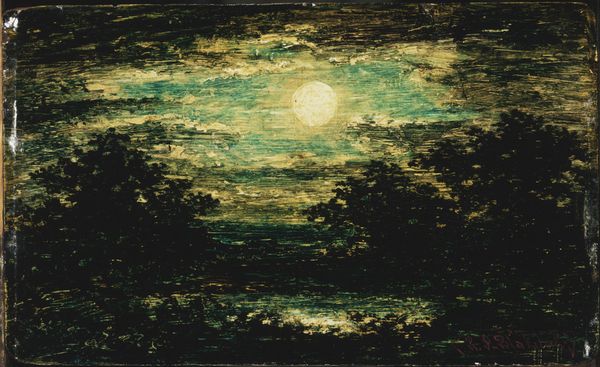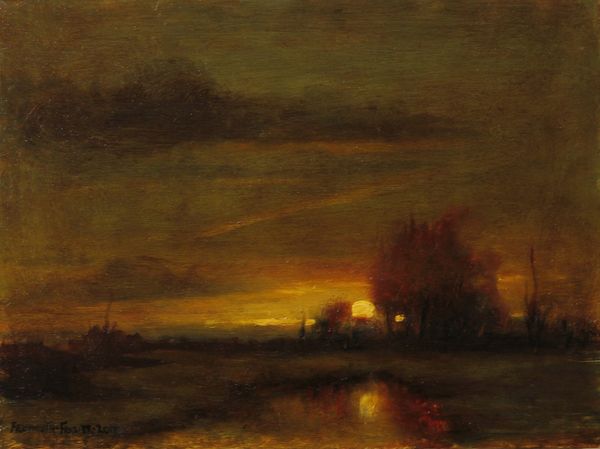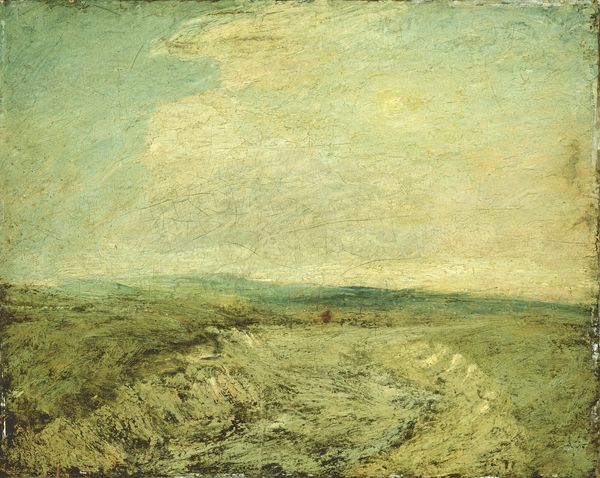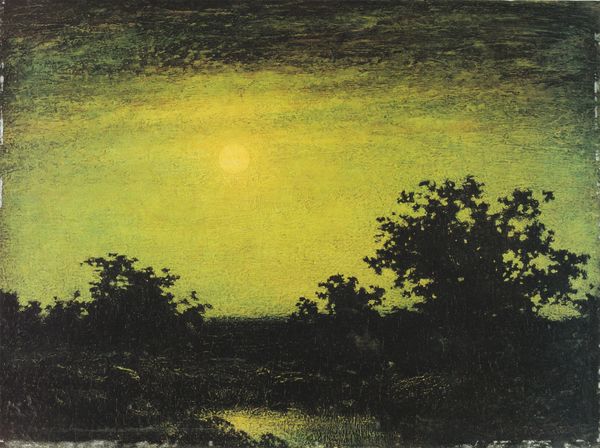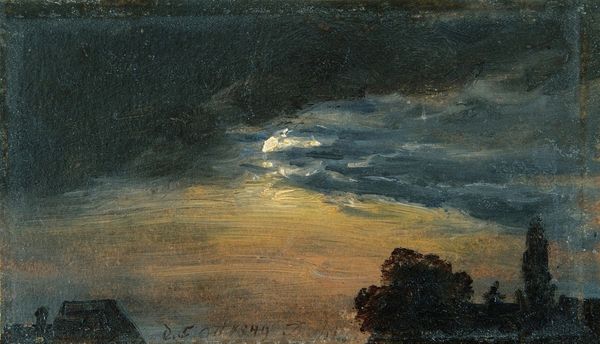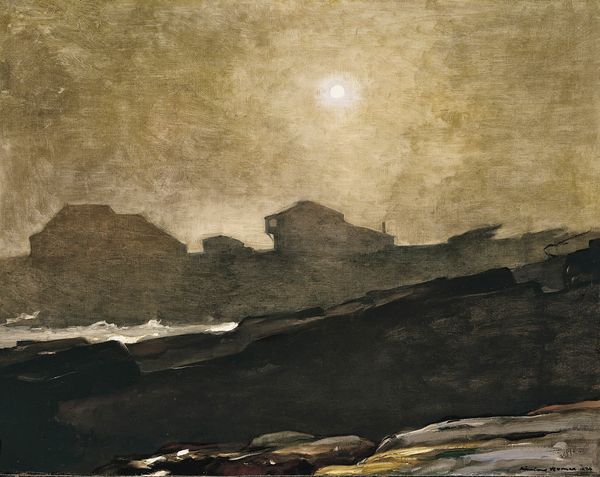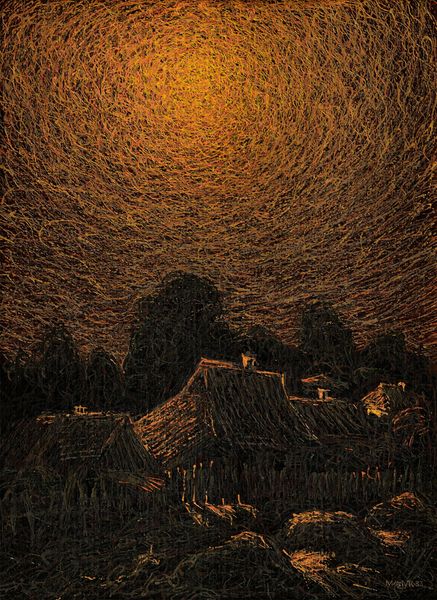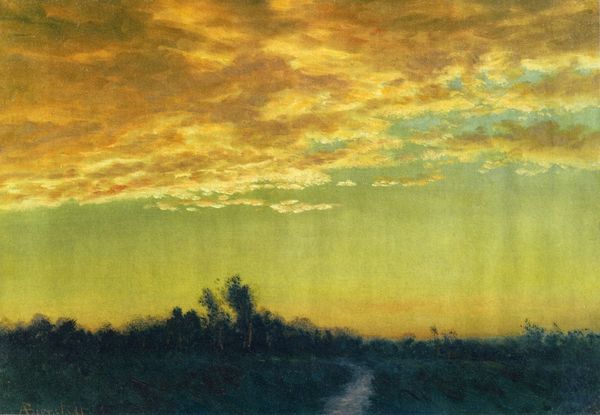
Copyright: Public domain
Curator: Immediately, I see the quiet stillness of the landscape but also a nervous application of the medium that conveys depth with an unconventional texture. Editor: We're looking at Albert Pinkham Ryder's "The Old Mill by Moonlight," created around 1885. A fascinating piece rendered with oil paint on canvas. Curator: Knowing it is oil paints, the impasto is amazing for its luminosity, considering the sombre palette; the layering seems intentional in how the dark base appears through lighter strokes. Was that deliberate for atmosphere, or an attempt to reconcile how his contemporary context had shaped artistic ideas? Editor: The history of exhibition practices offers some clues. Ryder was part of a shift—late 19th century—where smaller, more intimate galleries were championing works outside the academic salons, impacting whose work was seen and celebrated, or conversely ignored by mainstream critics. How could the institutional presentation shape interpretations, then and now? Curator: The materiality of the painting further amplifies this. Imagine how groundbreaking these heavy strokes and moody contrasts would have looked beside tightly rendered landscapes. What about Ryder's access to quality materials or even time for formal training impacting this departure? Were there limits due to material costs that encouraged experimental use of oil paints? Editor: He certainly resisted easy categorization and refused commissions later in his career which gives his vision additional authority. His approach connects the aesthetic sphere and his life choices of a person deliberately outside the system of market value, challenging conventional approaches to subject matter in terms of taste, as it were. How can this history contextualize this landscape? Curator: Perhaps as resistance toward polished artwork as a sign of wealth, championing individual visions as more meaningful by portraying something as seemingly everyday and overlooked as a dilapidated mill. The physical creation rebels as a statement on capitalist influence? Editor: Absolutely, and its romantic interpretation of that landscape reinforces it: the moon glow as it symbolizes something more human than industrial. Looking at it today I appreciate a reminder that history and societal pressure should constantly inform and contextualize creative interpretations, and influence taste as an outcome. Curator: Indeed. Reflecting on Ryder’s work it reminds one of the profound impact both choice and limitation of material can affect an artwork’s reception, making us consider labor practices and challenging how conventional creative expression had looked.
Comments
No comments
Be the first to comment and join the conversation on the ultimate creative platform.
